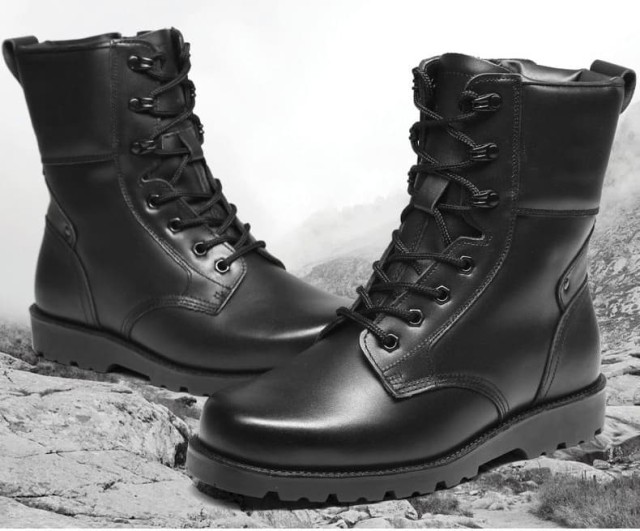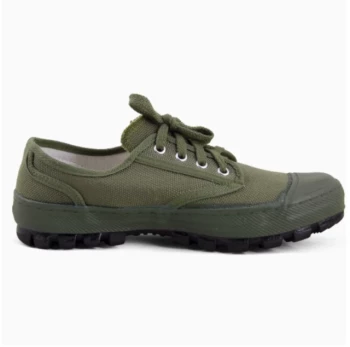When investing in quality footwear, construction methods determine longevity, maintenance costs, and suitability for different environments. Two dominant techniques—Blake stitch and Goodyear welt—offer distinct advantages. This guide breaks down their mechanics, compares durability and repairability, and helps you match the right method to your needs.
Blake Stitch and Goodyear Welt: Core Mechanics
Anatomy of Blake Stitch Construction
Blake stitching involves sewing the outsole directly to the shoe’s upper and insole using a single row of stitches. This method creates a sleek, flexible profile ideal for dress shoes and lightweight boots. Key traits:
- Flexibility: Thin, curved soles allow natural foot movement.
- Slim Profile: No midsole or welt layer reduces bulk.
- Water Resistance: Tight stitching minimizes water ingress but lacks reinforced barriers.
Anatomy of Goodyear Welt Construction
Developed in 1872, Goodyear welting uses a strip of leather (the welt) stitched to the upper and insole, while the outsole is attached separately. This overlapping design offers:
- Enhanced Durability: The welt acts as a buffer against wear.
- Easy Resoling: Outsoles can be replaced repeatedly without compromising the upper.
- Weather Resistance: The layered construction and cork filler improve insulation and moisture protection.
Did you know? Goodyear welted shoes can last decades with proper care, making them a favorite for heritage brands.
Durability and Maintenance Face-Off
Water Resistance and Flexibility Comparison
- Blake Stitch: Superior flexibility suits urban commuting but offers limited protection in wet conditions. Stitches exposed to salt or moisture may degrade faster.
- Goodyear Welt: The welt’s raised seam and cork filling repel water, ideal for rugged terrain or inclement weather. However, the stiff midsole reduces flexibility.
Resoling Complexity and Lifetime Value
- Blake Stitch: Resoling requires specialized machines to re-stitch through the insole, often costing more over time.
- Goodyear Welt: Outsoles can be replaced using standard tools, with some shoes resoled 5+ times. One study notes welted boots outlast glued alternatives by years.
Pro Tip: Rotate pairs to extend lifespan—both methods benefit from drying periods between wears.
Choosing the Right Method for Your Needs
Formal Footwear vs. Rugged Boots: Case Studies
- Dress Shoes: Blake stitch’s slim silhouette works for office wear, while Goodyear welts add unnecessary weight.
- Outdoor Boots: Goodyear’s layered construction handles mud, snow, and repeated resoling—critical for work boots or hiking footwear.
Cost-Benefit Analysis for Long-Term Ownership
- Upfront Cost: Blake stitch shoes are often cheaper initially but may require earlier replacement.
- Lifetime Value: Goodyear welted footwear costs more upfront but pays off with decades of use.
For distributors and brands, offering both constructions ensures coverage for diverse client needs—from fashion-focused buyers to durability-driven professionals.
Ready to Elevate Your Footwear Line? Partner with 3515 to leverage our expertise in crafting Blake stitch and Goodyear welt shoes tailored to your market. Whether you supply urban retailers or outdoor specialists, our scalable production ensures quality without compromise. [Contact us] to discuss your next order.
Final Thought: The "best" construction depends on context—prioritize flexibility for city life or ruggedness for the outdoors. Both methods reflect craftsmanship that outlasts fast fashion.
Related Products
- Wholesale Comfortable Business Casual Shoes Custom Manufacturing
- Durable High-Traction Canvas Sneakers Wholesale & Custom Manufacturing
- Wholesale Leather Ankle Boots with Lug Soles for Custom Brand Manufacturing
- Wholesale Modern Business Shoes with Dial Closure System for Bulk Orders
- Durable Leather Work Boots for Wholesale & Custom Manufacturing
Related Articles
- How to Choose Business Casual Shoes for Workplace Versatility and Comfort
- Decoding Business Casual: A Practical Guide to Aligning with Unwritten Workplace Dress Codes
- How to Choose and Style Business Casual Shoes for Workplace Confidence
- How to Master Business Casual Attire for Any Workplace Environment
- How to Wear Sneakers Professionally: A Style Guide for Modern Workplaces



















